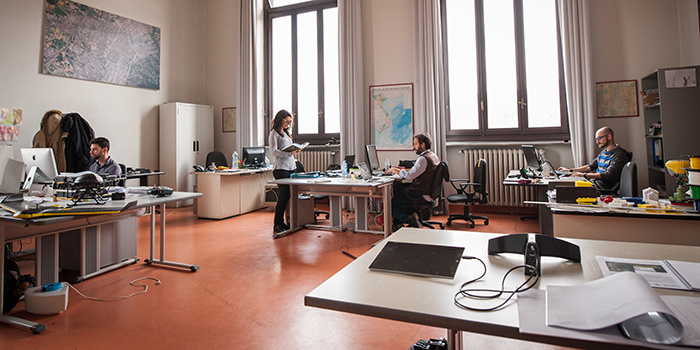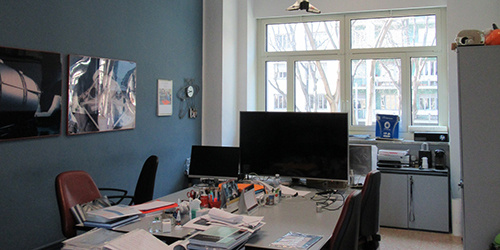The Office Environment

Workplace temperature
During working hours, the temperature in rooms containing workplaces must be adequate for human beings, having regard to the working methods being used and the physical demands placed on the employees.
Ventilation
There must be sufficient fresh air in enclosed workplaces, preferably provided by air entering through windows or other ventilation openings or, where that is not possible, through mechanical ventilation systems.
- There must be sufficient air changes (windows should be opened for 5 minutes every 2 hours),
- Ventilation system filters and air vents must be cleaned and serviced regularly,
- Air vents must never be covered,
- Any deposits of dust and dirt must be removed immediately.
Lighting
- Except in rooms located underground, workplaces must get sufficient natural light,
- All rooms and workplaces must be equipped with devices that provide adequate artificial lighting,
- It is important to consider any windows and lamps or reflective surfaces that could cause reflections or glare.
Pay attention to:
- Direct glare from windows, luminous surfaces or unshielded lamps in the worker’s field of vision.
- Indirect glare when light is reflected off shiny surfaces (metal, mirrors, etc.).
- Contrast glare between illuminated surfaces and dark environments (e.g., an illuminated sign in a dark environment).

General conditions to ensure comfort
- Thermal comfort: the recommended temperature is 20°C in winter (18-22) and 26°C in summer,
- Avoid abrupt changes in temperature (max. 6-7°C),
- Relative humidity 40-60%,
- Correct ventilation (natural/forced),
- Avoid exposure to draughts,
- Avoid excessive noise levels in the workplace,
- Adequate lighting (300-500 lux) by means of lamps with anti-glare grid or shielded,
- Windows with shielding.
The Health and Safety Services Unit carries out inspections and measurements to evaluate possible conditions of discomfort and cooperates to define the appropriate technical and organisational countermeasures to be implemented.
